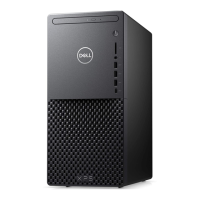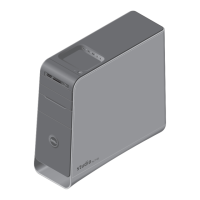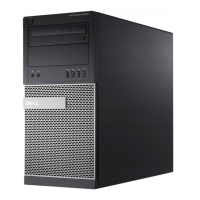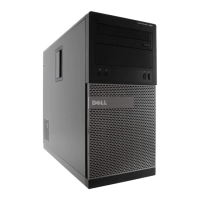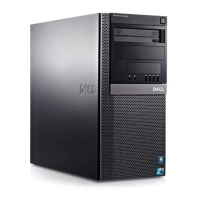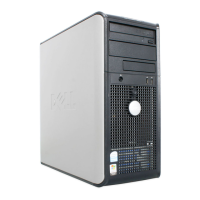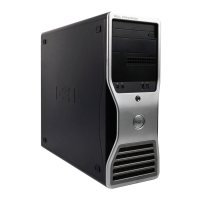Table 12. Storage specifications(continued)
Storage type Interface type Capacity
M.2 2230 solid-state drive, Class 35,
Self-Encrypting drive
PCIe NVMe, up to 32 Gbps 256 GB
M.2 2280 solid-state drive, Class 40 PCIe NVMe, up to 32 Gbps Up to 1 TB
M.2 2280 solid-state drive, Class 40,
Self-Encrypting drive
PCIe NVMe, up to 32 Gbps Up to 1 TB
Storage matrix
The following table lists the storage configurations supported on your OptiPlex Small Form Factor 7020.
Table 13. Storage matrix
Storage Slot
SSD0 (Primary
M.2 PCIe for
boot function)
SLOT1 (PCIe x1
slot)
SATA0
One M.2 2230/2280 solid-state drive Yes
One M.2 2230/2280 solid-state drive
+
One 3.5-inch hard-disk drive
Yes Yes
One M.2 2230/2280 solid-state drive
+
One M.2 2230/2280 solid-state drive (via PCIe Expansion card)
Yes Yes
One M.2 2230/2280 solid-state drive
+
One 3.5-inch hard-disk drive
+
One M.2 2230/2280 solid-state drive (via PCIe Expansion card)
Yes Yes Yes
Redundant Array of Independent Disks (RAID)
For optimal performance when configuring drives as a RAID volume, Dell Technologies recommends drive models that are
identical.
NOTE: RAID is not supported on Intel Optane configurations.
RAID 0 (Striped, Performance) volumes benefit from higher performance when drives are matched because the data is split
across multiple drives: any I/O operations with block sizes larger than the stripe size splits the I/O and become constrained by
the slowest of the drives. For RAID 0 I/O operations where block sizes are smaller than the stripe size, whichever drive the I/O
operation targets, determines the performance, which increases variability and results in inconsistent latencies. This variability
is particularly pronounced for write operations, and it can be problematic for applications that are latency sensitive. One such
example of this is any application that performs thousands of random writes per second in very small block sizes.
RAID 1 (Mirrored, Data Protection) volumes benefit from higher performance when drives are matched because the data
is mirrored across multiple drives all I/O operations must be performed identically to both drives, thus variations in drive
performance when the models are different result in the I/O operations completing only as fast as the slowest drive. While this
does not suffer from the variable latency issue in small random I/O operations as with RAID 0 across heterogeneous drives, the
impact is nonetheless large because the higher performing drive becomes limited in all I/O types. One of the worst examples
24
Specifications of OptiPlex Small Form Factor 7020
Restricted - Confidential

